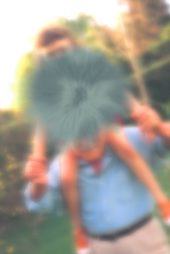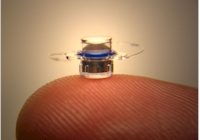 Windsor Clinic: 0800 644 0700 -
Reading Clinic: 0800 644 0900
tannereyes@sapphire-eyecare.co.uk
Windsor Clinic: 0800 644 0700 -
Reading Clinic: 0800 644 0900
tannereyes@sapphire-eyecare.co.uk
 Windsor Clinic: 0800 644 0700 -
Reading Clinic: 0800 644 0900
tannereyes@sapphire-eyecare.co.uk
Windsor Clinic: 0800 644 0700 -
Reading Clinic: 0800 644 0900
tannereyes@sapphire-eyecare.co.uk
Mr Tanner is currently not offering implantable miniature telescope and the information below is for background only. It refers to a previous version of the telescope no longer produced. We are aware of recent publicity surrounding the next generation of the implantable miniature telescope and await further evidence of long term safety and benefit before offering it to our patients.
Age-related macular degeneration (AMD) is a disease of the retina. End-Stage AMD is the most advanced form of the disease and the leading cause of irreversible vision loss and legal blindness in individuals over the age of 65.
In early, less advanced AMD, visual symptoms are generally mild and may or may not impact vision-related activities. However, advanced stages of AMD can result in severe loss of sight in the central part of vision. This is often referred to as a central vision “blind spot.” This blind spot is different than the visual disturbances experienced with cataracts (clouding of the eye’s lens) and is not correctable by cataract surgery or spectacles. Side vision, or peripheral vision, is not affected by AMD, but is too low resolution to make up for lost central vision.
The CentraSight treatment programme uses a tiny telescope, a CE Marked medical device, which is implanted inside the eye to improve vision and quality of life for individuals affected by End-Stage AMD.
The Implantable Miniature Telescope, about the size of a pea, is intended to improve distance and near vision in people who have lost central vision in both eyes because of End-Stage AMD.The telescope implant is surgically placed inside one eye. The implanted eye provides central vision; the other eye provides peripheral vision.
The telescope implant is not a cure for End-Stage AMD. It will not restore your vision to the level it was before you had AMD, and it will not completely correct your vision loss. Patients with this level of AMD have had to cease driving due to their vision. After the telescope procedure, although near and distance vision may improve, driving will not be possible because the implant does not restore normal vision.


In general, to be considered a potential candidate for the telescope implant a patient should have:
After confirmation by Mr Tanner that you are a potential candidate, your vision will be tested using an external telescope simulator. The results of the test and visual training/rehabilitation evaluation will help you and your Mr Tanner decide if you are likely to benefit from the CentraSight treatment and what your vision may be like after the treatment.
Additional information can be found at www.centrasight.com.
The CentraSight treatment programmed involves four steps that start with diagnosis and continue after surgery.
A member of Mr Tanner’s CentraSight team is involved at each step of the treatment. All CentraSight team members are highly qualified professionals, with special training in the CentraSight treatment programme and the Implantable Telescope Technology. The following pages explain what you can expect at each step of the programme.
The telescope implant is not a cure that “sees” for you. For the telescope implant to work for you, you will need to work with low vision specialists as well as practice on your own at home.
Realistic Goals:
Unrealistic Goals:
Visual goals can be assessed with an external telescope simulation during pre-surgery evaluation visits.
Mr Tanner
To be considered as a possible candidate for the treatment, you must first be examined to confirm that you have End-Stage AMD. Mr Tanner will describe the risks and benefits of the telescope implant to you, including the risks of surgery. This will involve a thorough medical eye examination and a review of your medical history, including any conditions that may make the procedure difficult for you or increase the likelihood of complications.

CentraSight Team Members: Low Vision Optometrist, Low Vision Rehabilitation Officer
The evaluation includes at least two appointments, including a low vision consultation performed by a low vision optometrist.
The candidate evaluation step includes testing your vision using external telescope simulators. The results of these tests can help give you and your CentraSight Team a good idea of what your vision may be like after the telescope implantation surgery and if the effect of the magnification in one eye will be useful to you. Low vision specialists will also talk to you about how your new vision status may affect your everyday life and how following a visual training/rehabilitation programme after surgery will help you reach your vision goals.
Mr Tanner
The telescope implantation surgical procedure is performed on only one eye. It involves removing the eye’s natural lens and replacing it with the tiny telescope implant. The surgical procedure is relatively short (1-1.5 hours). You won’t have to stay in hospital overnight and will return home the same day.
The telescope is virtually unnoticeable to others because it is implanted totally inside the eye, and mostly covered by the coloured portion of the eye (iris).
Before the Surgery
Be sure to let the team know if you take any medication or have any allergies. Mr Tanner will be happy to answer any remaining questions. You will need to arrange for transportation to and from your surgery appointment.
Day of Surgery
The procedure is performed on an outpatient basis and generally takes 1-1.5 hours.
If Mr Tanner is unable to implant the telescope during surgery, he will implant a standard intraocular lens (IOL), as in any procedure for cataract removal.
After the Surgery
After surgery, you will have follow-up visits with Mr Tanner. You will have to take eye drops for several weeks.
You should expect a gradual improvement in your vision of the treated eye to occur over a period of time, ranging from weeks to months.
CentraSight Team Members: Low Vision Optometrist, Low Vision Rehabilitation Officer
After you have recovered from surgery, specially trained low vision optometrists and rehabilitation officers will work with you to prescribe spectacles and complete your rehabilitation to help you adapt and learn how to use your new vision in daily life. They will work with you on an individualised plan over several weeks to reach your personal goals.
The effectiveness of the telescope implant has been demonstrated in FDA approved studies.
In results from a survey in the FDA clinical trial, patients who received the telescope implant generally reported that they were less dependent on others, less frustrated and worried about their vision, less limited in their ability to see, and better able to visit others and recognise facial expressions/reactions. Overall, the survey findings showed patients had a clinically important improvement in quality of life.1
An FDA study found that nine out of ten patients with the telescope implant improved vision by at least two lines on the eye chart.1
As with any medical intervention, potential risks and complications exist with the telescope implant.
The most common risks of the telescope surgery include inflammatory deposits on the device and increased pressure in the eye. Significant adverse events include corneal swelling, corneal transplant, and decrease in visual acuity. There is a risk that having the telescope implantation surgery could worsen your vision rather than improve it. Individual results may vary.
You should talk to Mr Tanner about these and other potential risks to find out if the telescope implant is right for you. Additional information can be found at www.centrasight.com.
1. Hudson HL, et al. Ophthalmology. 2006.
Disclaimer : The information provided in this website is intended as a useful aid to general practitioners, optometrists and patients. It is impossible to diagnose and treat patients adequately without a thorough eye examination by a qualified ophthalmologist, optometrist or your general practitioner. Hopefully the information will be of use prior to and following a consultation which it supplements and does not replace.


